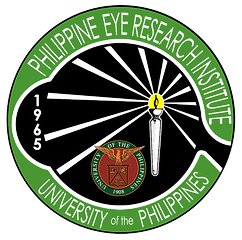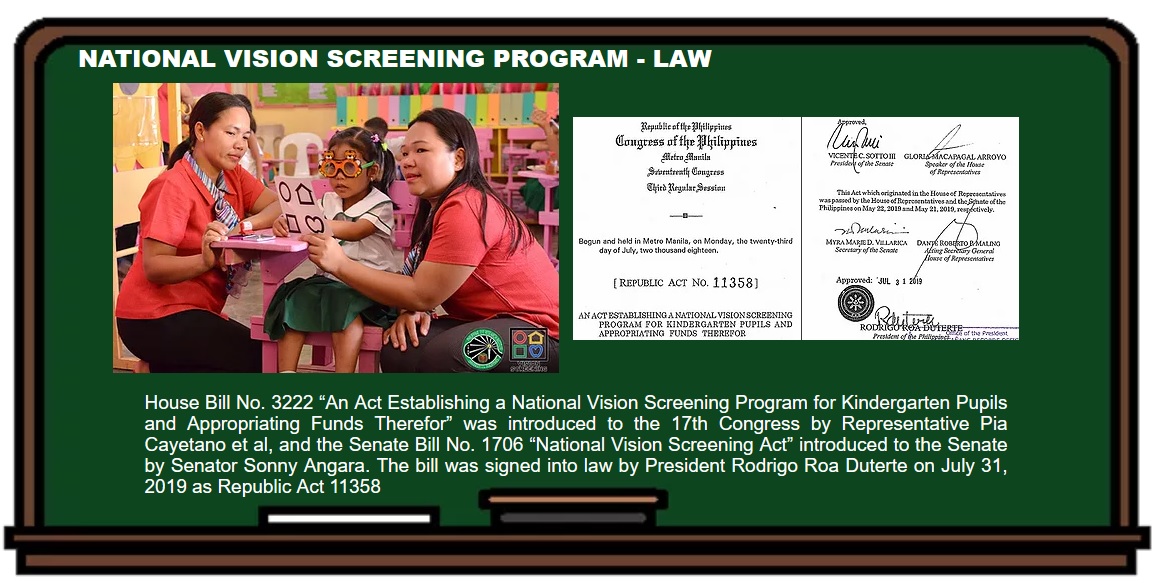Philippine Eye Research Institute


The Philippine Eye Research Institute was established by virtue of Republic Act No. 4593 on 19 June 1965 and is the oldest unit under the National Institutes of Health. Formerly known as the Institute of Ophthalmology, it is the center for advancement of ophthalmology in the country. It remains to be the forefront and main steward in conducting blindness prevention programs for the country through basic, clinical, and epidemiological research. The Institute conducts, collaborates, and supports researches directed towards the diagnosis, treatment, and prevention of eye diseases, specifically those prevalent in the Philippines.
PERI research staff have contributed a significant number of scientific publications and published several books and monographs on eye diseases. PERI has also formed linkages with other government and non-government agencies such as DOH, DepEd, PCHRD, and WHO.
One of its major thrusts is the National Vision Screening Program (NVSP). The NVSP is spearheaded by PERI, in partnership with the DOH and DepEd. Signed into law on 31 July 2019, the Program aims to screen all kindergarten pupils entering the Filipino school system to detect errors of refraction and amblyopia using a pre-tested Vision Screening Kit which was developed using evidence-based approaches. This simple pass-or-fail system will provide vision screeners, such as trained teachers, with the information, guidance, and recommendation to carry out the vision screening rapidly and with minimal errors.
Programs and Projects:
- National Vision Screening Program (NVSP)
- Online Remote Vision Screening Bridging Program (ORVSP)
- Philippine Eye Disease Study (PEDS)
- PERI Eye Drops (Broad Spectrum Ophthalmic Solution for Prophylaxis and Treatment of Ocular Infections)
- UK-Philippines Remote Retinal Evaluation Collaboration in Health Diabetic Retinopathy (REACH-DR) Project
- PERI-Joslin Diabetes Center (Harvard) Teleophthalmology Image Reading Center
- DOH-PERI Primary Eye Care Training Module and Poster
- WHO-DOH-PERI Retinopathy of Prematurity Program
EXISTING SERVICES AND PROJECTS:
- Experimental and Basic Research
- Ocular Microbiology
- Ocular Pathology
- Ocular Pharmacology
- Ocular Imaging
- Teleophthalmology
- Research Publications
- Epidemiology and Public Health
- Population-based
- Public Policy
- Health Services
- Clinical Research
- Collaboration: Department of Ophthalmology and Visual Sciences (DOVS), Department of Health (DOH), Department of Education (DepEd)
- Translational Research
- National Vision Screening Program (NVSP) Republic Act 11358
- Distribution of NVSP Kits Nationwide
- Training of Trainers
- Continuing Research and other related services
- Special Projects and Others
- New National Institutes of Health (NIH) Building
- UP New Clark City Projects
CURRENT RESEARCHES:
- National Vision Screening Program (NVSP)
- Online Remote Vision Screening Bridging Program
- PERI Eye Drops (Broad Spectrum Ophthalmic Solution for Prophylaxis and Treatment of Ocular Infections)
- Philippine Eye Disease Study (PEDS)
- UK-Philippines Remote Retinal Evaluation Collaboration in Health Diabetic Retinopathy (REACH-DR) Project
- Prevalence of Amblyopia and EOR among Kindergarten Pupils in Cavite
- Retinal Vascular Caliber Association with Nonperfusion and Diabetic Retinopathy Severity Depends on Vascular Caliber Measurement Location
- Addition of Mid-peripheral Fields to 2-Field Disc and Macula Handheld Retinal Images Improves Agreement with Early Treatment Diabetic Retinopathy Study (ETDRS) 7-Standard Field Photography
- Comparison of Nonmydriatic Handheld Retinal Imaging with Early Treatment Diabetic Retinopathy Study (ETDRS) 7-Standard Field Photography for Diabetic Retinopathy (DR) and Diabetic Macular Edema (DME)
- Intergrader Agreement for Diabetic Retinopathy (DR) using Handheld Retinal Imaging
- Cost-effectiveness analysis of retinal imaging devices for diabetic retinopathy screening.
- Comparison of Mydriatic Handheld Retinal Imaging with Early Treatment Diabetic Retinopathy Study (ETDRS) 7-Standard Field Photography for Diabetic Retinopathy (DR) and Diabetic Macular Edema (DME)
- Agreement rates for predominantly peripheral lesion (PPL) grading assessed using qualitative and quantitative methods on ultrawide field color images (UWF-CI) and fluorescein angiography (UWF-FA) in diabetic retinopathy (DR)
- Comparisons of Handheld Retinal Imaging Devices with Spectral Domain Optical Coherence Tomography (SDOCT) in the Identification of Macular Pathology
- Comparison of 1-Field and 2-Field Mydriatic Handheld Retinal Imaging with Early Treatment Diabetic Retinopathy Study (ETDRS) 7-Standard Field Photography for Diabetic Retinopathy (DR) and diabetic macular edema (DME)
- Comparison of Mydriatic and NonMmdriatic Handheld Retinal Imaging with Early Treatment Diabetic Retinopathy Study (ETDRS) 7-Standard Field Photography for Diabetic Retinopathy (DR) and Diabetic Macular Edema (DME).
- Identifying Undetected Prevalent Disease: The First Pass Effect in Diabetic Retinopathy Screening Programs.
- Molecular and Clinical Studies in Filipino Families with Inherited Cataract.
- Genotypic and phenotypic variations of inherited retinal degenerations among Filipinos.
PLANNED RESEARCHES:
- Animal Research Application
- Molecular Biology Research
- Engineering and Ophthalmic Devices Research
- Tissue Engineering and Stem Cell Research
- Fungal Keratitis Diagnostics Research
- Scientific Research Collaboration with local and international agencies, partnership with research and ophthalmic health institutions both public and private
Institute/Center administration:
Director: Leo DP Cubillan, MD, MPH, DPBO, FPAO
Assistant Director: Dr. Victor Arni Sicam
Office Address: 5/F Sentro Optalmologico, Padre Faura, Manila
